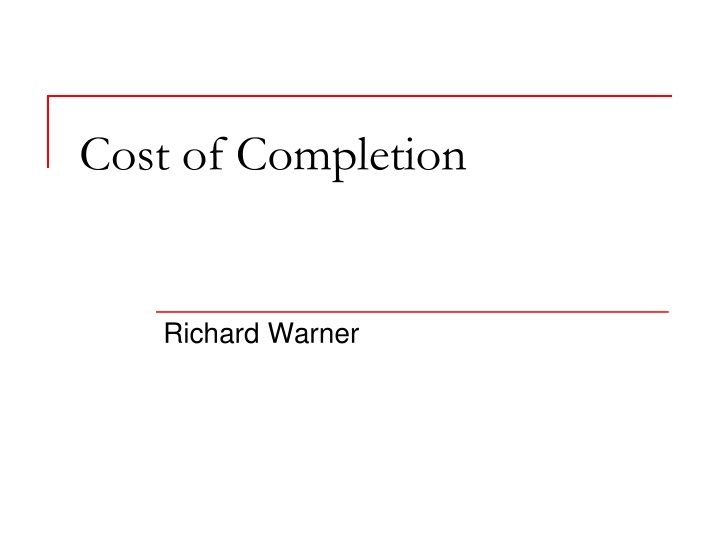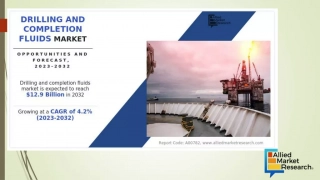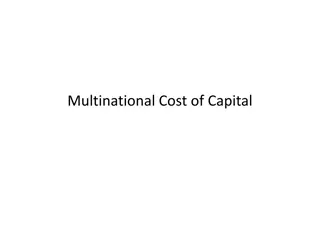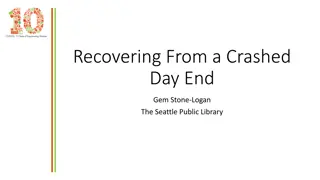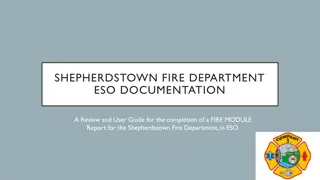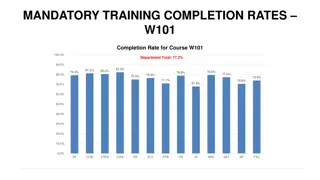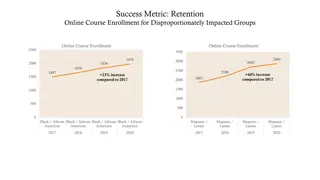Cost of Completion
Cost of completion in legal terms, including the value produced by completing work after a breach and the implications for parties involved. Understand the nuances of Peevyhouse v. Garland Coal and more.
Download Presentation

Please find below an Image/Link to download the presentation.
The content on the website is provided AS IS for your information and personal use only. It may not be sold, licensed, or shared on other websites without obtaining consent from the author.If you encounter any issues during the download, it is possible that the publisher has removed the file from their server.
You are allowed to download the files provided on this website for personal or commercial use, subject to the condition that they are used lawfully. All files are the property of their respective owners.
The content on the website is provided AS IS for your information and personal use only. It may not be sold, licensed, or shared on other websites without obtaining consent from the author.
E N D
Presentation Transcript
Cost of Completion Richard Warner
Cost of Completion The cost of completion = the cost of completing the work as promised after a breach. The value produced by completing the work = the value added to the work by completing it. The rule: You get the cost of completion unless it is grossly disproportionate to the value produced by completing the work, in which case, you get the diminution in value unless the breach willful in which case the court may award the cost of completion anyway. A willful breach is a breach that violates standards of good faith and fair dealing.
Peevyhouse v. Garland Coal Peevyhouse leased land to Coal Co. for strip mining, agreed to restore the land when finished, but didn't do so.
Completing The Work Means Filling in the hole. (a) Yes (b) No
The Cost of Completion and Value Produced By Completing the Work It costs $29,000 to fill in the hole. That is the cost of completion. The difference in market value of the land without the hole and the land with the hole is $300. If you measure by market value, the crucial question is, Is $29,000 grossly disproportionate to $300. (a) Yes (b) No
What Peevyhouse Gets You get the cost of completion unless it is grossly disproportionate to the value produced by completing the work, in which case, you get the diminution in value. If we measure value by market value, Peevyhouse gets the diminution in value = the value of the work as competed and the value as is = $300. (a) Yes (b) No
A Bad Faith (Willful) Breach? Garland Coal knew what it costs to fill in the hole when they entered the contract. The $29,000 cost would have more than eliminated their profit. So they must not have intended to fill in the hole when they promised to. That is fraud, and fraud is a prime example of bad faith. So why not: unless the breach willful in which case the court may award the cost of completion anyway?
Compare Expectation Damages Promise kept: get the royalties; get nice, useful land. Losses caused by the breach: land with a hole. Would it be proper mitigation to fill in the hole? It would not if you measure value by market value? (a) Yes (b) No
The Expectation Award So, on the expectation measure, using market value, the properly mitigating Peevyhouse gets $300. (a) Yes (b) No
If Proper Mitigation Was Filling in the hole, Peevyhouse would have gotten $29,000. (a) Yes (b) No
So What Is The Difference? Consider: You get the cost of completion unless it is grossly disproportionate to the value produced by completing the work, in which case, you get the diminution in value. When is the cost of completion not grossly disproportionate to the value produced? If the answer is, when it is proper mitigation to complete the work, then there is no difference.
Grossly Disproptionate Proper mitigation is spending money (time and effort) to save money (time and effort). Courts will sometimes hold that the cost of completion is not grossly disproportionate to the value produced even when it would not be proper mitigation to complete the work.
Jacobs & Young v. Kent J & Y built a country residence for [Kent] at a cost of upwards of $77,000, and now sues to recover a balance of $3,483.46, remaining unpaid. The work of construction ceased in June, 1914, and Kent then began to occupy the dwelling. There was no complaint of defective performance until March, 1915. One of the specifications for the plumbing work provides that "all wrought iron pipe must be well galvanized, lap welded pipe of the grade known as 'standard pipe' of Reading manufacture." Kent learned in March, 1915, that some of the pipe, instead of being made in Reading, was the product of other factories . . . The plumbing was then encased within the walls except in a few places where it had to be exposed. [Replacing it] meant more than the substitution of other pipe. It meant the demolition at great expense of substantial parts of the completed structure. J & Y left the work untouched.
Diminution In Value? Does Kent get the diminution in value? (a) Yes (b) No
Measuring Value 1 Market value Determined by how much people generally are willing to pay. Aesthetic value, Historical value Value to an individual Determined (in some cases) by how much that person is willing to pay--this may be more or less than the market value Or determined by the gain to the person who benefits from the provision of a good or a service.
Measuring Value 2 Actual cost of providing the good or service: Example: book dealer obtains a rare book for $50. The dealer sells the book for its market value of $100. The cost of providing the good is $50. Average cost to the reasonable seller: The average cost of the rare book to a bookdealer might be more or less than the actual cost to some particular dealer. The average cost might be $75. A particular dealer might pay more or less.
Charles Whitebread III inherited an all wooden sailing schooner from his father. The boat--The Aphrodite--is famous, among the sailing community, as one of the last and most beautiful examples of its kind. It has aesthetic and historical value as well as sentimental value to Charles. It s market value is $1,000,000. The schooner needs repair and restoration. Charles undertakes the repair to honor the memory of his father and to preserve the aesthetic and historical value of the boat. He hires Mike Gougen to do the repairs. The contract calls for an all wood restoration and specially prohibits the use of fiberglass. The contract price is $100,000. Gougen repairs and restores the boat. In various places, he uses fiberglass impregnated wood. The repaired Aphrodite has a market value of $1,150,000. When Whitebread discovers that some of the wood is fiberglass impregnated, he hires Sarah Woode, who replaces all the fiberglass impregnated wood with regular wood. She charges $200,000 for doing so (assume this is a reasonable price for the work). The fully wooden restored boat has a market value of $1,150,00. From the point of view of the expectation/mitigation measure, was it proper mitigation to hire Woode? Measure value by market value. (a) Yes. (b) No.
Charles Whitebread III inherited an all wooden sailing schooner from his father. The boat--The Aphrodite--is famous, among the sailing community, as one of the last and most beautiful examples of its kind. It has aesthetic and historical value as well as sentimental value to Charles. It s market value is $1,000,000. The schooner needs repair and restoration. Charles undertakes the repair to honor the memory of his father and to preserve the aesthetic and historical value of the boat. He hires Mike Gougen to do the repairs. The contract calls for an all wood restoration and specially prohibits the use of fiberglass. The contract price is $100,000. Gougen repairs and restores the boat. In various places, he uses fiberglass impregnated wood. The repaired Aphrodite has a market value of $1,150,000. When Whitebread discovers that some of the wood is fiberglass impregnated, he hires Sarah Woode, who replaces all the fiberglass impregnated wood with regular wood. She charges $200,000 for doing so (assume this is a reasonable price for the work). The fully wooden restored boat has a market value of $1,150,00. Whether Charles recovers the cost of completion depends on whether the court measures the value produced by completing the work by the contribution made to the market value of the boat. (a) Yes. (b) No.
The Foundations American Standard, Inc. operated a pig iron manufacturing plant on 26 acres of land abutting the Niagara River in Tonawanda. The property contained: buildings, a 60-ton blast furnace, railroad tracks and locomotives, and other heavy machinery. American Standard decided to close the plant and contracted with Schectman to convey the buildings and equipment, in exchange for $275,000 and his promise to remove everything. Schectman promised to remove all foundations etc., including those beneath the surface and not visible, and grade the property as specified. Schectman did not remove the below grade foundations. It made no difference to the market value of the property that the below grade foundations were not removed. Is American Standard entitled to the cost of completion? Measure value by market value. a) Yes b) No
How To Measure? Johnnie the Red Walker, of Bateau Ivre, Inc. is contacted by Rimbaud to excavate the site for Rimbaud s condo project, Les Genoux, the Eucalyptus Tree Paradise. They execute a written contract under which Johnnie will excavate the property, remove all maple trees, but leave the eucalyptus trees. The contract explains that Les Genoux appeals to a niche market of yuppies who believe that inhaling the smell of eucalyptus trees increases their longevity, and that without the trees the market value of the houses drops by $1,000,000. The contract also explains that the eucalyptus trees are to be a living monument to Rimbaud s recently deceased friend, Paul Valery, a famous poet who loved eucalyptus trees.Valery s grave is to be moved to a secluded grove of trees. When excavating, the transmission on Johnnie s earth mover goes out, and he has to use a smaller mover. This causes delays, and Johnnie begins to drink scotch as he works. The drunk Johnnie takes out all the eucalyptus trees by mistake and leaves the maple trees. He immediately joins AA, apologies to Rimbaud, and quits construction work. Rimbaud hires Wallace Stevens, Inc. to replace the eucalyptus trees and to complete the excavation. The cost of replacing the eucalyptus trees and completing the excavation is $1,300,000. Would you measure value by a) Market value b) Another option
The Dormitory Jacksonville State University (Jacksonville) decided to build a women's dormitory. Jacksonville awarded the contract to Dawson Construction Company, Inc. (Dawson). Dawson was to construct the building according to certain specifications, among them that certain panels were to waterproof. After the panels were installed on the dormitory, water began to come through them causing many of them to buckle away from the walls. The court held this was a breach of contract. Add facts sufficient to support the position that Jacksonville is entitled to the cost of completion.
